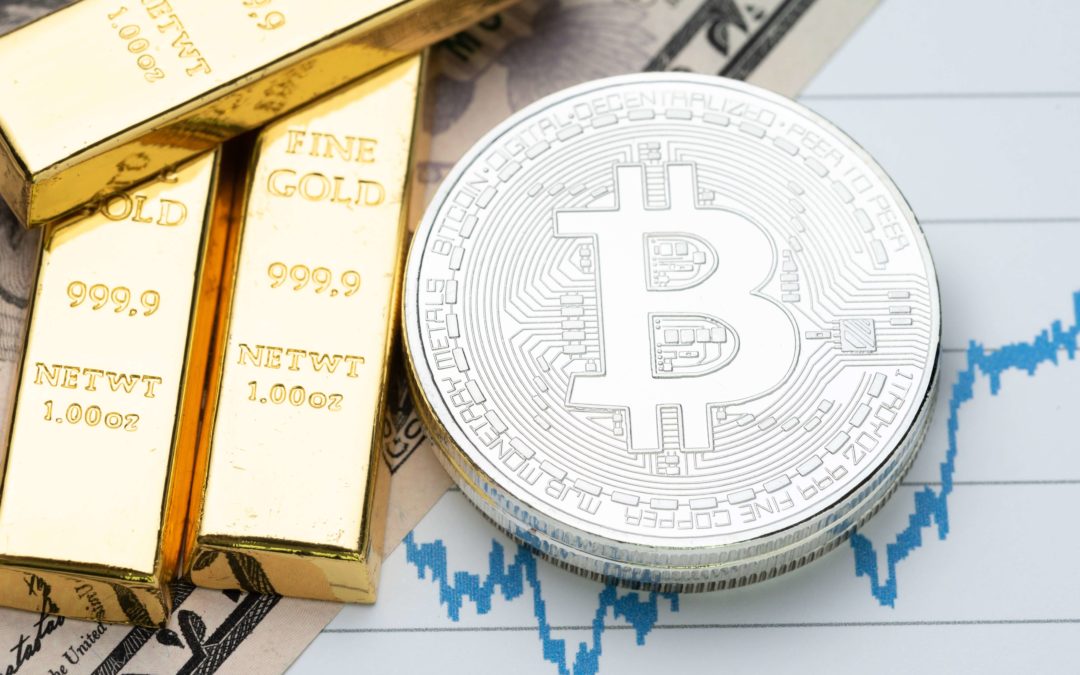I don’t know if any of you have noticed but Bitcoin is back on another tear. We’ve all been so focused on the aftershocks of the Coronapocalypse and when things might get back to some semblance of normal, Bitcoin has quietly put in another rally that almost defies description.
Since cratering alongside everything else in early March to levels not seen since 2017, Bitcoin exploded above $9,000 Thursday and then flirted with $10,000 for the first time since last summer’s rally. That collapse occurred as leverage in the futures market forced liquidations into thin trading.
A lot of markets went without bids that day.
In a span of just seven weeks, Bitcoin has rallied more than $6,000 — or more than 155%. If you thought the bounce in equity prices was impressive (if inexplicable), and it has been, Bitcoin has been like, “Oh, you’re cute, yo. Hold mah beer!”
And there are a number of good reasons for this, regardless of your inclination toward Bitcoin. The first is the simple truth that Bitcoin is fast being perceived as a different class of asset, a point I’ll expand on in a bit. The second is we’re coming up on its next “halving,” which only happens once every four years.
[totalpoll id=”21544″]
Why Bitcoin Is on Fire
But the most important reason why Bitcoin is en fuego is because the traditional financial system as stage-managed by the central bank cartel is fast becoming unglued. On Wednesday, both the Fed Funds Futures and Eurodollar futures signaled negative interest rates before the end of this year. Zerohedge covered both of these events in detail (see above links).
And the last time we saw the U.S. system flirt with negative Treasury yields back in March, both gold and bitcoin went ballistic. The situation today is different, but the implications are just as ominous.
Jeff Snider over at Alhambra Partners wrote a great piece recently reminding everyone that just because the Fed can print trillions of dollars, it has zero control over what those dollars do. And that the Fed’s obsession with creating bank reserves (its only real power) is a chimera, a weapon that looks frightening and capable of tremendous power if we fear it, but in reality is powerless in the face of the markets more fearful of us than the Fed.
Bank reserves are, therefore, little more than one form of account the banking system might hold. They are not money in any meaningful sense. They are possibly money only in that if a bank or banking cohort wishes to use them in a meaningful way.
But that requires the right combination of balance sheet factors (the real money in this global system) in order for it to happen. Unless animated by the banking system, bank reserves, no matter at what level, are inert. They come off Bernanke’s printing press that way and remain in this condition so long as those bank factors say so…
…This explains both sides of the QE divide (which, then, isn’t really a divide at all). The inflation critics don’t factor balance sheet constraints in their view of this outdated “base money.” Neither do central bankers, which is why they expect bank reserves to be equivalent to “liquidity” at the least.
And this, to me, is the crux of why Bitcoin exploded more than $1,500 in two days after the implied fed funds went negative. Once we’re into the deflationary vortex of capital destruction that negative yields bring, the argument for alternatives like gold and bitcoin as safe-haven assets strengthens exponentially.
Any volatility in bitcoin or holding costs in gold pale in comparison of a 3% grinding loss every year.
So, that’s why I think Bitcoin is beginning to assert itself, as an asset, in the same class as gold, a hedge against institutional incompetence and revealed powerlessness. Over its lifespan it has done more to call out the impotence of the Fed than gold has.
When you add in the fact that bitcoin is less than a week away from the “halving,” where its inflation rate through new coin generation halves as a function of Bitcoin’s core code, which a lot of people are speculating on bringing a much higher price like previous halvings, then you have the perfect storm for an explosion in its price.
In a world of vanishing financial privacy and capital controls, bitcoin has advantages gold doesn’t have. And when you think through current market conditions and realize that there is very little actual supply of bitcoins available for trade, any slight change in demand creates an outsized move in price.
 As we approach the halving, the Grayscale Bitcoin ETF’s (NYSE: GBTC) AUM accounts for 29% of current new issuance. That percentage is set to roughly double in four days as new issuance halves per unit time. Meanwhile, the Fed creates new reserves at an astounding rate which it knows full well it cannot let circulate without causing the hyperinflation everyone fears.
As we approach the halving, the Grayscale Bitcoin ETF’s (NYSE: GBTC) AUM accounts for 29% of current new issuance. That percentage is set to roughly double in four days as new issuance halves per unit time. Meanwhile, the Fed creates new reserves at an astounding rate which it knows full well it cannot let circulate without causing the hyperinflation everyone fears.
So, don’t be surprised if this current rally is just the beginning of a much bigger one, one that can and will call into question the true failures of the central banks, their apologists we call “economists,” and the politicians who can take the reins of a national currency at any time for the most selfish reason there is, power.
Where we stand right now is Bitcoin trading just a few hundred bucks below near-term resistance at around $10,500 per coin. The situation is seen most clearly on the monthly chart.
This strong opening to May puts Bitcoin in a position challenge the January high. It’ll do a dance at $10,000 for a little while but ignore that. If that resistance at $10,500 gets broken intraday and holds for a weekly close, then the next stop is the 2019 high near $14,000.
After that, the all-time high comes quickly into focus.
The credit markets are signaling continued dollar illiquidity and the Fed is standing powerless to affect anything other than to stuff the banks full of reserves and hope. Hope isn’t a plan under normal operating conditions.
And it’s an especially bad one during crisis periods.
Like it or not, gold bugs, bitcoin is here to stay. It’s something you are going to have to contend with in your future monetary models. Gold is great and I love it, but I’m not monogamous in my relationship with safe-haven assets protecting me from a collapse the “Central Bank Gang Who Can’t Print Straight.”
Because when Bitcoin stands next to gold as a personal reserve asset and the concept of centralized national currency reserves goes the way of the decentralized dodo, prices today will be orders of magnitude higher to achieve parity with the metal of free people.
• Money & Markets contributor Tom Luongo is the publisher of the Gold Goats ‘n Guns Newsletter. His work also is published at Strategic Culture Foundation, LewRockwell.com, Zerohedge and Russia Insider. A Libertarian adherent to Austrian economics, he applies those lessons to geopolitics, gold and central bank policy.




